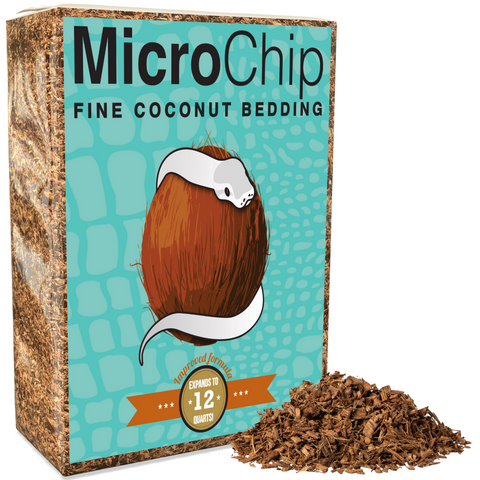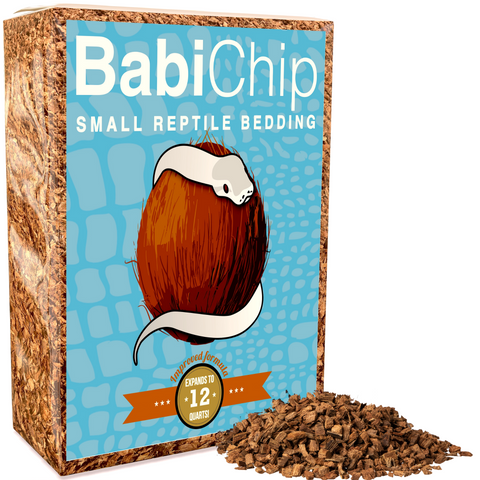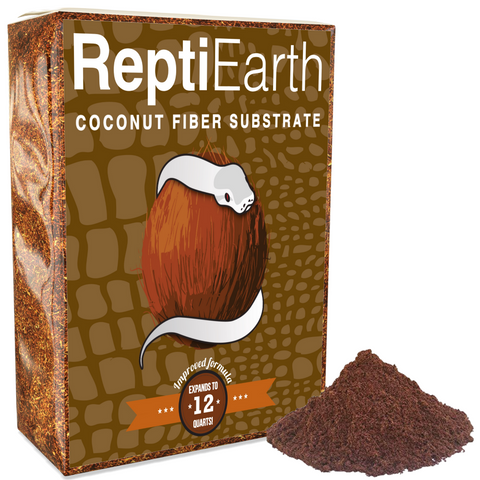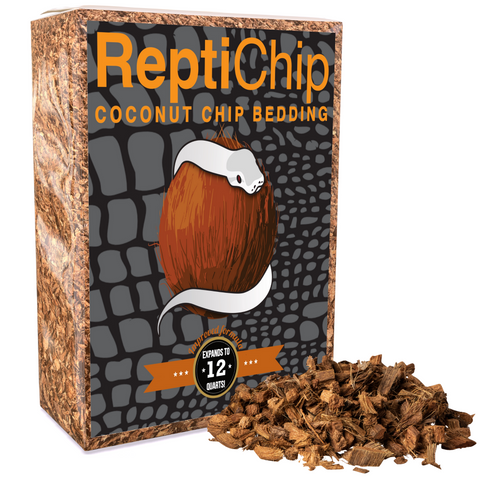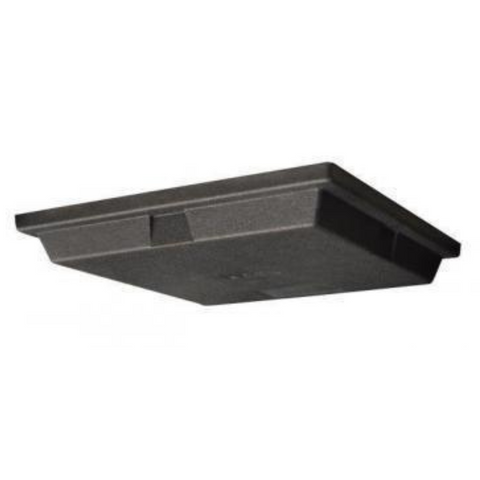Natural History
The Peruvian long-tailed boa (Boa constrictor longicauda) is a powerful, non-venomous constrictor native to the dry tropical forests and scrublands of northwestern Peru’s Tumbes region. Unlike its rainforest-dwelling relatives, this subspecies is adapted to a more arid, seasonal environment, where it relies on camouflage and stealth to thrive. Its striking variation in coloration and patterning—from bold saddles to muted, earthy tones—provides effective concealment against both predators and prey. Like other boas, it is an ambush predator, relying on patience, explosive speed, and strength to capture and subdue meals. Though primarily terrestrial, its long, muscular body allows it to climb and navigate diverse terrain with ease.
This boa is live-bearing, with females giving birth to fully developed young rather than laying eggs. A typical litter ranges from 10 to 30 offspring, each measuring around 16 to 20 inches at birth. Neonates grow rapidly in their first years, especially with frequent feeding, and sexual maturity is usually reached between three to five years of age, with females often taking longer than males. Adults typically reach 5 to 8 feet, with females tending toward the larger end of the spectrum. In captivity, with proper care, they may live over two decades, sometimes exceeding 25 years.
Peruvian long-tailed boas are generally crepuscular to nocturnal, becoming most active at dusk and into the night. In the wild, their diet consists of rodents, birds, and other small vertebrates, which they locate with the aid of heat-sensitive pits along the upper lip. Prey is seized with recurved teeth and subdued by powerful coils until asphyxiation occurs. While capable of defensive displays—such as hissing, striking, or coiling—they are not inherently aggressive and often rely on their cryptic appearance to avoid conflict.
Ecologically, this subspecies fills the role of a mid-level predator within the dry-forest ecosystem of northwestern Peru, helping to regulate prey populations and maintain ecological balance. Juveniles are more vulnerable, facing threats from birds of prey, carnivorous mammals, and even larger reptiles, which is one reason they are produced in large numbers. Because their distribution is relatively narrow and specialized, B. c. longicauda is more vulnerable to habitat loss and human encroachment than some of its more widespread relatives.
The Peruvian long-tailed boa’s restricted range, unique coloration, and adaptation to arid tropical habitats make it one of the most distinctive members of the Boa constrictor complex. For keepers, understanding its natural history and ecological niche is essential for providing appropriate care in captivity.
Conservation Status
The Peruvian long-tailed boa (Boa constrictor longicauda) has not been individually assessed by the IUCN Red List. Its parent species, Boa constrictor, is currently listed as Least Concern, reflecting a generally stable population across its broad range. However, because B. c. longicauda is restricted to a relatively small region in northwestern Peru, its conservation outlook is less clear and may differ significantly from the species as a whole. Habitat loss, agricultural expansion, and human encroachment pose potential risks to this subspecies, particularly given its limited distribution.
Other pressures include localized collection for the pet trade and incidental mortality from roads and habitat fragmentation. While these threats are not considered severe on a global scale for Boa constrictor, they may have a greater impact on small, range-restricted populations such as B. c. longicauda. Unlike some other boa species, it is not heavily targeted for the skin trade, though hunting and opportunistic killing still occur in certain areas. Climate change may also present future challenges by altering prey availability and the seasonal conditions that shape its dry-forest habitat.
Currently, B. c. longicauda benefits indirectly from several national parks and protected areas within Peru that conserve portions of its natural habitat. Captive breeding programs, particularly within the reptile-keeping community, also help reduce pressure on wild populations by providing a sustainable source of animals for the pet trade. However, because its conservation status has not been formally evaluated, ongoing research and monitoring are needed to determine population trends and to assess the effectiveness of existing protections.
Native Range
The Peruvian long-tailed boa is endemic to a limited region of northwestern Peru, primarily within the Tumbes and Piura departments. Unlike the broader Boa constrictor species, which ranges widely across South America, this subspecies has a much more restricted distribution, making it more vulnerable to localized environmental changes. It inhabits both lowland and mid-elevation areas, typically from near sea level up to around 5,000 feet.
This boa thrives in tropical dry forests, seasonally humid forests, and scrub-like habitats. It is often associated with river valleys, riparian corridors, and areas where scattered tree cover provides both shade and climbing opportunities. While capable of tolerating somewhat drier conditions than rainforest-dwelling boas, it is still most commonly found in regions where humidity remains consistently high and water sources are nearby. Within these ecosystems, it makes use of varied microhabitats such as dense undergrowth, hollow logs, root systems, and leaf litter, offering both concealment and ambush sites for hunting.
The climate across its native range is generally warm and humid, with daytime temperatures averaging between 75°F and 86°F throughout the year. Nighttime lows may dip to around 68°F, though major temperature swings are rare. Relative humidity typically remains above 70%, rising even higher during the rainy season when heavy precipitation is frequent. During the dry season, these boas may become more sedentary, retreating to sheltered refuges to maintain hydration and avoid prolonged exposure to heat or low-moisture conditions.
Access to water plays an important role in the distribution of B. c. longicauda. Streams, wetlands, and riparian zones not only provide ambient humidity but also concentrate prey such as rodents, birds, and other small vertebrates. The surrounding vegetation—ranging from scattered trees and shrubs to thick patches of undergrowth—offers both vertical climbing opportunities and ground-level refuges. Substrates are typically organic-rich soils or loose leaf litter, which allow for concealment and thermoregulation.
Overall, this subspecies is highly adapted to northwestern Peru’s warm, humid, and seasonally dynamic forests. Its dependence on specific environmental features—especially water availability and vegetative cover—makes ongoing habitat loss from agriculture, grazing, and deforestation a particular concern.
Behavior
The Peruvian long-tailed boa is a primarily nocturnal species, with peak activity occurring after sunset. In the wild, individuals become more active during the warmer months, often increasing movement in search of food and mates. Seasonal changes in temperature and humidity influence their behavior significantly, with cooler months leading to decreased activity, particularly in regions where temperatures drop below their preferred range. While they do not go into full brumation, they may exhibit a period of decreased metabolic activity in response to seasonal cooling. During the breeding season, males become noticeably more active, traveling long distances to locate receptive females, while females tend to remain within a defined home range.
This species is largely solitary, coming together only during the breeding season. They do not establish defined territories but will exhibit defensive or evasive behaviors when encountering conspecifics outside of mating interactions. Males engage in ritualized combat, where they entwine and attempt to overpower one another to establish dominance and gain access to females. Courtship is relatively prolonged, often involving tongue flicking, body contact, and spurring by the male. Once mating is completed, females provide no parental care beyond gestation. Since they are ovoviviparous, they give birth to fully developed live young, which immediately begin independent life post-birth.
Environmental factors play a crucial role in shaping the behavior of this species. As ectotherms, they rely on external heat sources to thermoregulate, often basking early in the night on warm surfaces to maintain optimal body temperature. They exhibit strong responses to humidity fluctuations, seeking shelter or burrowing during excessively dry conditions to prevent dehydration. Their sensory perception is highly developed, with a strong reliance on chemoreception through tongue-flicking to detect prey and conspecifics. Heat-sensitive pits along their labial scales allow them to accurately detect warm-blooded prey, giving them an advantage in low-light environments. When threatened, they prefer cryptic behaviors such as remaining motionless against bark or leaf litter to avoid detection. However, if further provoked, they will engage in defensive displays such as hissing, striking, or coiling into a defensive posture. Unlike some other large-bodied constrictors, they rarely resort to tail rattling or bluff-striking unless highly stressed.
One of the species' defining behaviors is its ambush-hunting strategy. While it is capable of active foraging, individuals typically rely on patience, lying in wait for prey to approach before striking with precision. Their strong constricting ability allows them to subdue large prey relative to their body size. In captivity, this instinct often persists, leading to occasional misdirected feeding responses if handling occurs too close to feeding time. Another unique behavioral trait is their ability to utilize vertical space efficiently, often climbing low branches and structures in their habitat to observe their surroundings or regulate body temperature.
Captivity often alters certain natural behaviors. While wild specimens exhibit sporadic and extensive roaming, captive individuals tend to become more sedentary, particularly if provided with an inadequate enclosure size or enrichment. Feeding behavior in captivity also differs, as they become accustomed to scheduled feedings rather than opportunistic hunting, sometimes resulting in food anticipation behaviors such as increased tongue-flicking and prowling near feeding times. Captive stress responses vary widely, with some individuals acclimating well to regular handling while others remain defensive or elusive despite consistent interaction. Proper habitat complexity, including climbing opportunities, varied textures, and environmental gradients, helps to encourage more natural behaviors and mitigate stress-induced behaviors such as excessive hiding or striking.
Ultimately, the Peruvian long-tailed boa exhibits a wide range of complex and instinctual behaviors that must be considered in its care. Failure to provide appropriate environmental conditions or adequate stimulation can lead to increased stress, atypical inactivity, or health issues related to insufficient thermoregulation or hydration. Understanding the behavioral distinctions between wild and captive individuals is key to providing optimal husbandry that supports both their physiological and psychological well-being.
Captivity Requirements
Enclosure Design
When housing this species, it is crucial to provide an enclosure that allows for proper movement, climbing, and security. Juveniles can be housed in enclosures measuring at least 36 inches long, 18 inches wide, and 18 inches tall to accommodate their active nature and semi-arboreal tendencies. However, as they grow, adults require substantially larger enclosures, with a minimum of 6 feet in length, 2 feet in width, and 2 feet in height. Larger enclosures are always preferable, particularly for individuals that exhibit more active or arboreal behavior.
The enclosure material should be sturdy and well-ventilated, with PVC, high-density polyethylene (HDPE), or melamine being ideal choices due to their durability and ability to retain heat and humidity effectively. Glass enclosures are less effective for larger individuals due to their poor heat retention and limited durability. Ventilation should be balanced; excessive airflow can lead to unstable humidity levels, while inadequate airflow may encourage the growth of mold and bacteria. Opt for controlled vent placement, such as side ventilation panels, to maintain ideal conditions.
A well-designed layout should replicate this species' natural habitat, which consists of forested areas where they frequently climb and use ground cover for concealment. Branches, shelves, and thick vines should be provided for climbing, ensuring they are securely anchored to handle the weight of a growing snake. Multiple hiding spots, such as cork bark rounds, hollow logs, or commercial reptile hides, should be placed throughout the enclosure at different elevations to allow the snake to feel secure. A well-placed basking area near a sturdy perch or platform should be incorporated to encourage natural thermoregulation behavior.
Security measures must be a priority, as these snakes are powerful and capable of pushing against weak enclosure points to escape. Sliding glass doors with locking mechanisms are recommended, as well as latches that prevent accidental openings. Gaps around ventilation panels or doors should be minimal to prevent escapes, especially for smaller individuals that may be adept at squeezing through small spaces.
Lighting and Heating
Proper lighting and heating are essential for maintaining the health of this species. While they are primarily crepuscular to nocturnal, they still require a well-established temperature gradient and access to appropriate UVB lighting to support metabolic function and calcium absorption.
The temperature gradient should include a basking area ranging between 86°F and 88°F, while the ambient daytime temperature gradient should remain between 75°F and 82°F. Nighttime temperatures can be allowed to drop slightly, with a range of 72°F to 75°F being ideal to mimic natural environmental conditions. Heat sources should be provided via a combination of radiant heat panels, ceramic heat emitters, or overhead deep heat projectors. Avoid heat rocks or any direct-contact heating devices to prevent burns.
UVB exposure, while not an absolute necessity for survival, has been shown to benefit boids by aiding in vitamin D3 synthesis and promoting overall health. A low-output 5% to 7% UVB bulb should be used, positioned to allow a proper distance of 12 to 18 inches from the basking area while accommodating natural shading opportunities within the enclosure. The photoperiod should be maintained at 12 hours of light and 12 hours of darkness, with seasonal variations introduced to replicate natural cycles. A gradual adjustment to daytime length during winter and summer can support natural hormonal rhythms and improve overall well-being.
Substrate and Enrichment
Selecting the proper substrate is critical for maintaining appropriate humidity levels while ensuring it is safe for this species. A mix of ReptiChip and ReptiEarth works well to hold moisture while allowing natural behaviors such as burrowing and exploring. Avoid overly fine substrates like pure sand, as well as materials that pose an impaction risk, such as calcium sand or dry, particulate-heavy bedding.
Enrichment is an essential component of husbandry for this intelligent and exploratory species. Elevated climbing areas such as secured branches, thick ropes, or commercial shelves encourage natural arboreal exploration. Hides should be placed at various points to allow access to both warm and cool areas. Rotating enclosure furniture occasionally, such as rearranging hides and climbing structures, can provide mental stimulation and prevent enclosure monotony. Some individuals respond well to puzzle feeders or scent trails created using food items, increasing exploration and engagement within the environment.
Humidity and Hydration
Maintaining proper humidity is vital for the health of this species, as improper levels can lead to incomplete sheds, dehydration, and respiratory issues. An optimal humidity level of 60% to 70% should be maintained, with slight fluctuations depending on the shedding cycle. A humidity gradient is useful, where one side of the enclosure is slightly more humid, allowing the snake to self-regulate.
To achieve consistent humidity levels, misting the enclosure lightly once or twice daily may be necessary, depending on ventilation and substrate choice. Humidity-retentive substrates such as ReptiEarth or sphagnum moss can help retain moisture. A large water bowl should be provided, both for drinking and soaking opportunities, with water changed regularly to prevent bacterial growth. Placement of this water source can also help regulate humidity; placing it beneath a primary heat source enhances evaporation, increasing ambient moisture.
Monitoring humidity with digital hygrometers ensures that levels remain stable. Enclosure adjustments, such as partially covering ventilation or using humid hides with damp sphagnum moss, can support proper hydration. Signs of dehydration, such as wrinkled skin or excessive time spent soaking, should be addressed promptly by reassessing environmental conditions to optimize hydration opportunities.
Diet & Supplementation
In its natural habitat, this species is a non-venomous carnivore that primarily preys on a variety of small to medium-sized vertebrates. Its diet consists mainly of rodents, bats, birds, and occasionally other reptiles. Juveniles tend to consume smaller prey such as amphibians, lizards, and small mammals, while adults focus on larger animals, including arboreal and terrestrial rodents, birds, and even opossums. This dietary flexibility allows the species to thrive in diverse ecosystems, including tropical rainforests, dry forests, and riverine habitats, where prey availability fluctuates throughout the year. The species is an ambush predator, relying on stealth and strong constriction to subdue its prey. It uses cryptic coloration to blend into leaf litter, branches, or rocky outcroppings, striking quickly when an unsuspecting animal comes within range. Once it secures a target, the snake wraps its muscular body around the prey, cutting off blood circulation rather than suffocating it. This method ensures a rapid kill while minimizing the risk of injury from struggling prey. Though primarily a nocturnal hunter, it also exhibits crepuscular activity, allowing it to take advantage of prey that is transitioning between daytime and nighttime behaviors. Sensory adaptations play a crucial role in its hunting strategy. It relies heavily on chemoreception, using its forked tongue and Jacobson’s organ to detect and process chemical cues from the environment. Additionally, heat-sensitive pits allow it to detect warm-blooded prey in low-light conditions, which is particularly useful when hunting in dense foliage or at night. Unlike some closely related species, this boa does not rely significantly on visual tracking but will use motion detection to pinpoint potential meals.
The diet of this species changes with age, size, and environmental factors. Neonates and juveniles require frequent feedings due to their higher metabolic rates and tend to target smaller, more abundant prey. As they grow, their feeding frequency decreases, and they shift toward larger prey items that provide more substantial energy reserves. Seasonally, food availability in the wild may vary, influencing feeding behaviors. During drier months or periods of reduced prey activity, the species may experience prolonged fasting, adapting metabolically to conserve energy. These natural fluctuations should be taken into account when maintaining the species in captivity. In captivity, the species' diet should replicate its natural feeding habits as closely as possible. A staple diet of appropriately sized rodents, such as mice and rats, is commonly provided. Hatchlings and juveniles should be fed every 5 to 7 days, while adults can sustain a healthy weight when fed every 2 to 4 weeks. Supplementation is typically unnecessary if captive diets consist of whole prey items, as rodents provide complete nutrition. However, if the diet includes alternative prey, such as birds or reptile meat, calcium and vitamin D3 supplementation may be required to maintain proper bone health.
Feeding challenges in captivity can sometimes arise. Stress, improper temperatures, or inadequate humidity levels may cause food refusal. Offering freshly thawed, pre-killed prey warmed to body temperature can help encourage feeding responses. Some individuals may develop preferences for specific prey types, necessitating gradual transitions between different food sources. Obesity is another concern, as captive snakes often experience a more sedentary lifestyle than their wild counterparts. Monitoring body condition and adjusting feeding frequency accordingly is essential to prevent excessive weight gain. Providing environmental enrichment, such as naturalistic enclosures with climbing branches, hides, and varied substrate textures, can promote more natural foraging behaviors. Scenting prey with natural food sources, such as feathers for birds or fur for rodents, may encourage reluctant feeders to accept meals. By closely mimicking the natural dietary habits and feeding strategies of the species, keepers can ensure its long-term health and well-being in captivity.
Reproduction
The reproductive process of this species follows a well-documented pattern seen in many large constrictors, with sexual maturity typically reached between three and five years of age, depending on factors such as genetics, overall health, and consistent access to appropriate nutrition. Males generally exhibit a more slender build with longer, more pronounced spurs near the cloaca, which are used in courtship behaviors, whereas females tend to be more robust and may attain larger sizes.
During the breeding season, males seek out receptive females and may engage in ritualized behaviors such as tongue flicking, body alignment, and the use of their spurs to stimulate the female. In situations where multiple males are present, combat may occur, characterized by wrapping around one another and attempting to pin the opponent to the ground to establish dominance. Courtship can last several hours to days, with successful copulation marked by the male’s insertion of one of his hemipenes into the female’s cloaca. Copulation may occur multiple times over several weeks to enhance the chances of fertilization. Some females may store sperm for delayed fertilization, which can result in unexpected reproduction even without recent breeding encounters.
Environmental conditions play a crucial role in triggering reproductive behaviors. Seasonal fluctuations, particularly a cooling period in the months preceding breeding, are typically required to simulate the natural cycles that induce mating readiness. A decrease in nighttime temperatures by approximately 5 to 10 degrees Fahrenheit for several weeks, combined with a slight reduction in daylight hours, helps signal the onset of the breeding period. Additionally, humidity levels should be carefully regulated, as an increase in moisture can coincide with peak receptivity in females. In captivity, these environmental shifts must be precisely controlled to encourage predictable breeding behavior.
As a ovoviviparous species, reproduction requires different considerations compared to egg-laying reptiles. Gestation lasts several months, during which females may exhibit changes in behavior, including increased basking to regulate internal temperatures critical for embryonic development. Proper thermal gradients must be maintained to allow pregnant females to thermoregulate effectively. While some individuals may be tolerant of social housing outside of the breeding cycle, most pairings should be carefully monitored to prevent stress or aggression, particularly in confined enclosures. Many breeders utilize separate enclosures, introducing males only during planned breeding sessions to ensure compatibility and minimize stress-related reproductive failures.
Several challenges may arise in captive breeding, particularly in ensuring compatibility between individuals. Some females may reject specific males, requiring alternative pairings to be explored. Stress due to improper handling, excessive environmental disturbances, or housing in inadequate enclosures can lead to reproductive failure or resorption of developing offspring. In some cases, females may suffer from dystocia, or difficulty giving birth, which requires veterinary intervention. Providing a well-structured environment, adhering to appropriate seasonal triggers, and ensuring proper nutrition and hydration throughout the breeding process all contribute to successful outcomes. With careful planning and attention to the species’ natural reproductive cues, captive breeding can be accomplished with a high degree of success.
Incubation & Neonate Care
The species is ovoviviparous, meaning it gives birth to live young rather than laying eggs. Gestation lasts approximately five to eight months, depending on environmental conditions such as temperature and food availability. Gravid females usually exhibit reduced activity and increased basking behavior during pregnancy to help regulate fetal development. As the due date approaches, females may seek out secluded, warm, and humid areas within their enclosure to facilitate the birthing process. It is crucial to provide a secure and stress-free environment during this period, as excessive handling or disturbances can lead to complications such as stillbirths or retained embryos.
Birthing occurs over several hours, during which the female will deliver fully formed neonates encased in thin, transparent membranes. The number of offspring produced varies but typically ranges from 10 to 30, with larger females capable of giving birth to higher numbers. Healthy neonates will quickly emerge from their birth sacs, while weaker individuals may require manual assistance if they fail to break free. Any undeveloped or stillborn young should be promptly removed from the enclosure to prevent contamination and stress. The mother typically exhibits little to no parental care, and neonates are independent from birth. However, in some cases, a female may display mild defensive behaviors directly after giving birth, likely due to residual hormonal influence.
Once born, neonates should be separated from the adult enclosure to prevent accidental injury or predation, particularly if housed in a multi-snake environment. A dedicated neonatal setup should be prepared with appropriately sized enclosures, ensuring each young snake has access to a secure hiding space, proper thermal gradients, and adequate humidity levels. The ambient temperature should be maintained between 75 and 82°F, with a warm basking area reaching 86 to 88°F to facilitate proper digestion and thermoregulation. Humidity should be maintained around 60–70% to support healthy skin hydration and prevent shedding complications. Substrates such as moist paper towels or ReptiEarth are recommended initially, as they allow for easy monitoring of waste and hydration levels.
Feeding should begin approximately 7 to 10 days after birth, typically following their first shed. Neonates usually accept appropriately sized rodents such as small fuzzy mice or rat pinkies. If a neonate refuses food, scenting prey with reptile-safe alternatives, feeding live prey, or using assist-feeding techniques may be necessary. Fresh water must always be available, with small, shallow water dishes provided to prevent accidental drowning. Hydration is particularly important for young snakes, as dehydration can result in incomplete sheds and poor overall health.
Health concerns in neonates include retained shed, dehydration, and refusal to eat. Close monitoring during the first few weeks is crucial to ensure all individuals are thriving. Any neonates that display lethargy, significant weight loss, or prolonged fasting may require veterinary attention. Handling should be minimized until regular feeding responses are established, as excessive stress can contribute to feeding difficulties. With proper care and monitoring, neonates grow rapidly and exhibit strong feeding responses, eventually requiring larger enclosures as they develop into healthy juveniles.
Conclusion
Successfully maintaining this species in captivity requires an in-depth understanding of its natural behaviors, environmental needs, and physiological requirements. By replicating its native habitat as closely as possible through appropriate enclosure design, temperature regulation, humidity control, and enrichment, keepers can support both the physical health and psychological well-being of these snakes.
Dietary management is another crucial aspect of husbandry, ensuring that feeding schedules align with the species' natural metabolic cycle while avoiding common pitfalls such as overfeeding or feeding inappropriate prey sizes. Observing natural hunting behaviors, such as ambush-striking and constriction, further highlights the species' reliance on instinct-driven feeding strategies. Reproductive considerations in captivity must also be carefully managed, with attention to environmental triggers, seasonal cycling, and proper breeding pair introduction to ensure optimal reproductive success. Proper neonate care is particularly important, as the earliest stages of development set the foundation for long-term health and viability.
Though not formally assessed at the subspecies level, the longicauda faces the same overarching threats as other South American boas, including habitat loss and human encroachment. Responsible captive breeding, legal sourcing, and informed husbandry practices ensure that this distinctive boa continues to be appreciated without adding pressure to wild populations.
Ultimately, this species is a rewarding yet demanding reptile to maintain, suitable for experienced keepers who can meet its environmental and behavioral needs. Respecting its natural history and complex behaviors enhances the captive experience, making it both a fascinating and enriching species to work with. With proper management, these snakes can thrive in human care, offering keepers a unique glimpse into the behaviors and adaptations that make them such effective predators in the wild.



